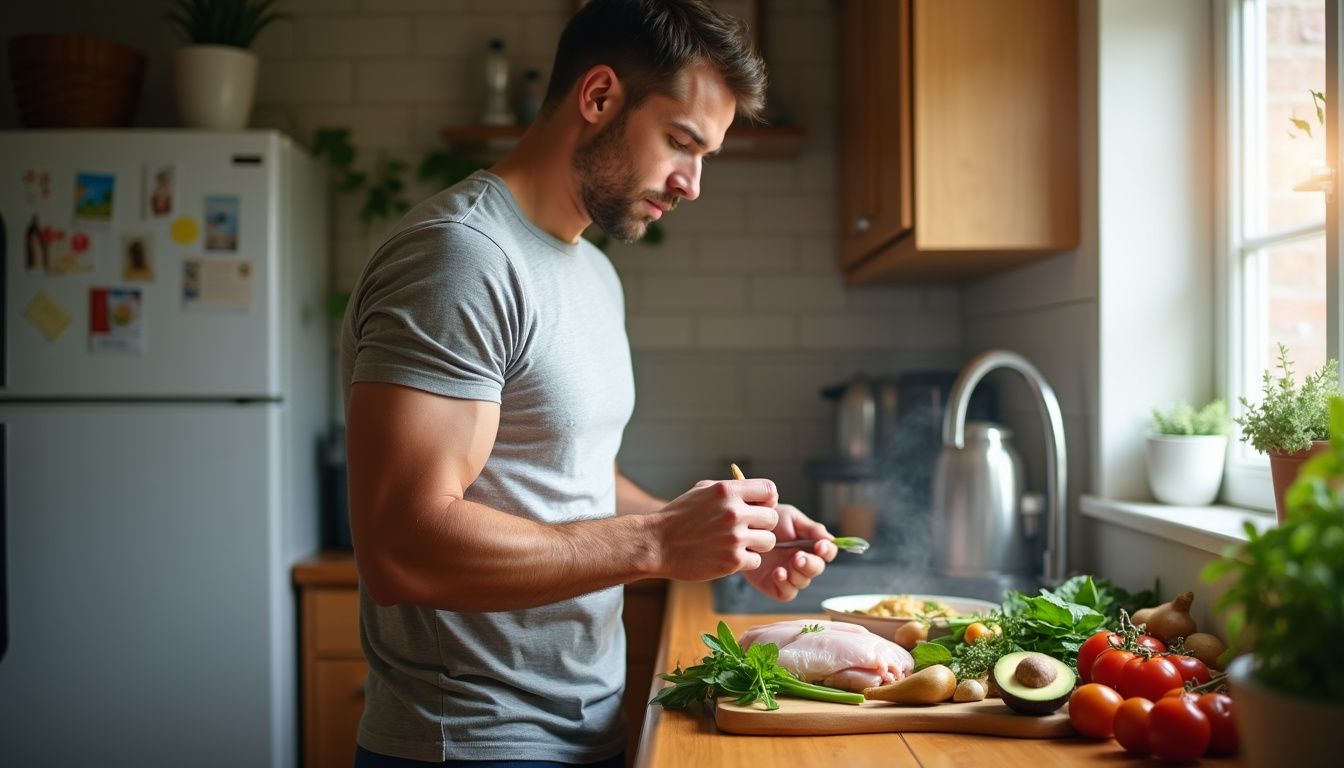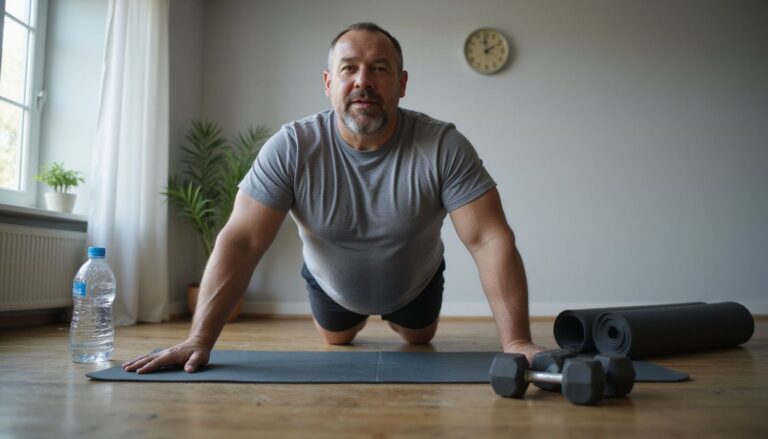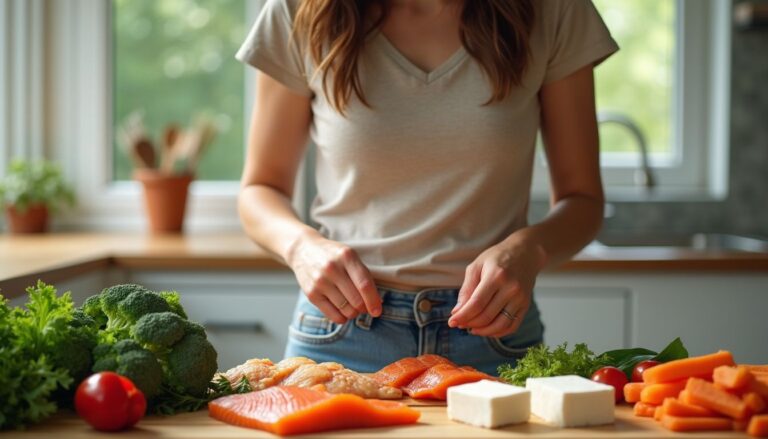Top 6 High Calorie Foods For Gaining Weight: Meals And Snacks To Boost Calories
Our Nutrition Assistant AI Suite will transform your body. You will lose fat, get toned, and build muscle. Gain confidence and optimal health.
Gaining weight can feel hard, even with big meals and frequent snacks. I have been there, and it is frustrating when the scale will not move. Choosing high-calorie foods that also carry vitamins, protein, and healthy fats helps raise daily calorie intake without stuffing yourself.
After reviewing guidance from registered dietitians, I learned that options like avocado, nuts, whole milk, and fatty fish add energy and nutrition at the same time. In this guide, I share the top picks and simple meals and snacks that make adding calories easy. Try a few ideas and see which ones fit your routine and taste.
Key Takeaways
- Avocados, nuts and nut butters, seeds, olive oil, fatty fish, and red meat deliver about 120 to 305 calories per typical serving, which helps you add energy fast.
- Complex carbohydrates such as sweet potatoes, brown rice, oats, and granola provide steady fuel and make it easier to meet a higher calorie goal.
- Protein-rich choices like eggs, steak, yogurt, and cheese support muscle growth while raising total calories.
- Portable snacks, including dried fruit, dark chocolate, and cereal bars, help fill the gaps between meals.
- Pairing high-calorie picks with nutrient-dense foods supports balanced nutrition during healthy weight gain.

Why High-Calorie Foods Are Important for Gaining Weight

High-calorie foods make it simpler to raise daily calorie intake for weight gain. I focus on nutrient-dense choices, which means foods that pack many nutrients per bite. That way I get energy for training and recovery, not just empty calories.
How do calorie-dense foods help with weight gain?
Calorie-dense foods are foods that provide many calories in a small portion. One tablespoon of olive oil contains about 119 calories. One ounce of almonds adds roughly 170 calories. These small add-ons help me eat more without feeling uncomfortably full.
I like quick combos, such as nut butter on whole grain bread or avocado with eggs. These meals are easy to eat and bring both fats and protein, so gaining weight feels more manageable. For people who get full fast, this approach can make a big difference.
How to balance high-calorie and nutrient-rich foods?
I build meals that mix calories with key nutrients. Avocado on toast gives healthy fats and fiber. Yogurt with granola and almonds adds protein, vitamins, and energy. Whole grains like brown rice paired with salmon supply starch for fuel and omega-3 fats for recovery.
My go-to smoothie blends whole milk or whole milk Greek yogurt with nut butter plus fresh or dried fruit. That mix brings carbs, protein, and healthy fats in one glass. I avoid relying only on fried snacks or sweets. Instead, I include starchy vegetables and quality protein so I gain weight and protect my health.
Foods High in Healthy Fats
Healthy fats are the easiest way I know to lift calories without huge portions. They fit into many meals and support a healthy diet for muscle gain.
What makes avocados good for gaining weight?
One medium avocado has about 240 calories, most from monounsaturated fat, the kind linked to heart health. Half an avocado adds around 120 calories plus vitamin E, vitamin C, fiber, and potassium. I mash it on toast, tuck it into wraps, or blend it into smoothies for a creamy boost.
Which nuts and nut butters are best for calories?
Nut butters are a simple way to add energy. Two tablespoons of peanut butter deliver about 188 calories and some protein. Almonds provide roughly 164 calories per ounce, cashews about 157, and walnuts around 185 with omega-3 fats. Hazelnuts hit about 178 and pecans approach 200 per ounce. I rotate nut types for flavor, then use almond or peanut butter on toast, fruit, and oatmeal to keep calories up.
How do seeds like sunflower and pumpkin seeds add calories?
Seeds raise calories in small servings and bring protein and healthy fats. One ounce of roasted pumpkin seeds supplies about 126 calories. One ounce of sunflower seeds adds roughly 164. I sprinkle them over salads, yogurt, and cereal, or stir them into trail mix. This gives extra energy without extra sugar, which helps when I am trying to gain weight and protect muscle.
Why is olive oil a beneficial calorie source?
Olive oil is a concentrated source of calories, about 120 per tablespoon. It is rich in monounsaturated fat and antioxidants. I drizzle it over salads, cooked grains, and vegetables. It lifts flavor and adds energy in seconds, which helps me hit my daily target.
What fatty fish provide healthy fats and calories?
Salmon, mackerel, and sardines bring protein plus omega-3 fats. Salmon has about 204 calories per 100 grams. Mackerel can reach about 305 calories per 100 grams. A small can of sardines gives close to 200 calories. I add these fish to grain bowls or pasta, which increases calories and supports recovery after training.
Foods High in Complex Carbohydrates
Complex carbohydrates digest slower than simple sugars. They provide steady energy for your day and your workouts, which is useful while adding calories.
Which starchy vegetables are good for adding calories?
Potatoes are a classic choice. One large baked potato has around 278 calories. One cup of mashed sweet potato offers about 249 calories and plenty of vitamin A. A cup of corn has roughly 143 calories and fiber. Peas give about 117 calories per cooked cup and some protein and iron. I often pair these with olive oil, cheese, or sour cream to push energy higher.
How do whole grains help increase calorie intake?
Whole grains add calories and nutrients at the same time. One cup of cooked brown rice provides about 215 calories. A large whole wheat bagel can top 300. These foods refill glycogen, which is the stored carbohydrate your muscles use for fuel. Switching from white bread to whole grain bread helps me raise calories and fiber without extra effort.
Can pasta and noodles support weight gain?
Yes. One cup of cooked spaghetti has about 220 calories. I add olive oil, cheddar cheese, or ground beef to push a serving well past 400 calories. Whole grain pasta keeps fiber higher while total calories remain strong. Many athletes lean on pasta meals for long-lasting energy.
Are granola and cereal effective calorie boosters?
Granola is energy dense. One cup often exceeds 400 calories, and the number climbs with milk or yogurt. Whole grain cereal can help too, especially with nuts, dried fruit, or nut butter mixed in. I keep granola bars for busy days so I do not miss my calorie target.
Protein-Rich High-Calorie Foods
Protein builds and repairs muscle tissue. I pair protein with fats and carbs to raise calories and support growth.
How do eggs contribute to high-calorie diets?
One large egg has about 72 calories and 6 grams of high-quality protein. Egg yolks also carry vitamins and healthy fats. Two eggs with olive oil on avocado toast can top 200 calories, which is great for breakfast. I also use eggs in pancakes and fried rice to increase both calories and protein.
What types of red meat are best for gaining weight?
Fattier cuts like ribeye, brisket, and higher fat ground beef provide more calories per bite. A 3-ounce cooked portion of ribeye is about 228 calories and supplies iron, zinc, and creatine, which supports training. Lean cuts still work if I add calorie-dense sides, for example mashed potatoes with butter and cheese.
Why include poultry like chicken and turkey?
Chicken and turkey are leaner than many red meats and still help grow muscle. Skinless chicken breast has about 165 calories per 100 grams. Turkey breast is around 135 per 100 grams. I roast or bake them for meal prep, then add olive oil, rice, and vegetables for a balanced, higher calorie plate.
How do dairy products add calories and protein?
Whole milk gives about 150 calories and 8 grams of protein per cup. Cheddar cheese has about 115 calories per ounce. Greek yogurt can reach 130 calories per small container and at least 11 grams of protein. I also use whey protein when I cannot meet my goals with food alone. Blending whole milk into smoothies or pouring it over cereal makes a quick upgrade.
When should you use protein shakes and powders?
I use them after workouts, on rushed mornings, or during recovery from illness. A milkshake with protein powder delivers calories and amino acids, which support muscle repair. Mixing protein powder with whole milk and nut butter creates a filling drink that fits a high-calorie plan.
Easy Snacks to Boost Calories
Small, frequent snacks are like stepping stones, each one nudging your daily total higher.
Which dried fruits are best for extra calories?
Dates can provide over 400 calories per cup. Raisins approach 430 calories per cup. Dried apricots land around 313 calories per cup and add key minerals. I carry a small mix for long days and add dried fruit to yogurt or oatmeal for a quick lift.
How does dark chocolate help increase calorie intake?
Dark chocolate is compact energy. One ounce can deliver about 155 calories, depending on cocoa content. Bars with 70 percent cocoa or more supply fat, fiber, and minerals. I crumble a square into cereal or blend it into a smoothie for an easy bump.
What are good smoothie recipes with whole milk and nut butters?
Smoothies help me add calories without heavy chewing. These blends are simple and fast:
- Blend 1 cup whole milk, 1 ripe banana, and 2 tablespoons peanut butter. Add ice for texture.
- Mix 1 cup whole milk, 2 tablespoons almond butter, half an avocado, and a little honey.
- Combine 1 cup whole milk, 2 tablespoons cashew butter, 1 tablespoon cocoa powder, and a handful of oats.
- Use Greek yogurt with whole milk, add sunflower seed butter, then blend with frozen berries.
- Make it tropical with mango, coconut milk, whole milk, and peanut butter.
- Add pumpkin seeds for extra protein and healthy fats.
- Stir in granola or cereal at the end for crunch and more calories.
These are easy to scale up, so I adjust ingredients based on my goals and appetite.
How to use crackers with cream cheese or peanut butter as snacks?
Crackers with spread are quick, tasty, and easy to eat between meals. Here is how I build them for more calories:
- Pick whole grain or multigrain crackers for extra fiber and steady energy.
- Spread two tablespoons of cream cheese per serving, which adds about 100 calories.
- Use natural peanut butter for healthy fats. One tablespoon adds about 90 calories.
- Add sliced banana or strawberry on top for sweetness and vitamins.
- Sprinkle chia or pumpkin seeds for more protein and calories.
- Pair with dairy-based spreads to include calcium and extra fat.
- Prep a few ahead of time and store in an airtight container.
- Rotate spreads, for example almond butter with a drizzle of honey.
Are cereal bars effective for adding calories?
Yes. Many cereal bars provide 150 to 250 calories per bar, especially those with nuts, seeds, nut butter, and dried fruit. I keep one in my bag for a no-cook option. Choosing bars made with whole grains, oats, and healthy fats makes each bite count.
High-Calorie Meal Ideas
These meal ideas stack protein, carbs, and fats so you add calories without guesswork.
How to make avocado toast with eggs for more calories?
Avocado toast with eggs is simple and filling. I boost the calories with these steps:
- Use thick slices of whole grain or sourdough bread for more calories and fiber.
- Mash one ripe avocado and spread it over the toast, about 250 calories per half avocado.
- Drizzle 1 tablespoon olive oil on top for another 120 calories.
- Cook 2 large eggs, fried or poached, about 70 calories each with complete protein.
- Add sliced tomato or crumbled feta for extra flavor and energy.
- Sprinkle sunflower, pumpkin, or flax seeds to add minerals and 30 to 50 calories.
- Serve with baked beans or roasted potatoes for a full high-calorie plate.
What’s a high-calorie macaroni and cheese recipe?
Mac and cheese is comfort food that scales well for calorie goals. Here is my method:
- Cook 2 cups elbow macaroni in whole milk plus water to add richness.
- Melt 4 tablespoons butter, then stir in 1/4 cup flour to form a thick roux.
- Slowly whisk in 2 cups whole milk and simmer until smooth.
- Add at least 2 cups shredded cheddar. I sometimes use mozzarella for extra melt.
- Stir in 1/2 cup heavy cream to raise calories and creaminess.
- Combine with pasta. Bake at 350°F for 20 minutes until bubbly and golden.
- Top with crushed crackers mixed with melted butter for a crisp, high-energy finish.
- Serve with vegetables roasted in olive oil or as a side to baked chicken.
Each step lifts fat and calories while keeping protein in the mix.
How to prepare beef or chicken stir-fry with rice for weight gain?
Stir-fry lets me pack in protein, carbs, and fats in one pan. I keep it simple:
- Slice beef sirloin or chicken breast thin for fast cooking.
- Marinate in olive oil, soy sauce, garlic, and ginger to add flavor and fat.
- Cook jasmine or basmati rice. One cooked cup adds over 200 calories.
- Use colorful vegetables like peppers, broccoli, carrots, and onions.
- Sear the meat in a hot pan with extra olive oil for more calories.
- Add vegetables and cook until crisp-tender.
- Top with crushed peanuts or sesame seeds for a final calorie bump.
- Serve a generous portion and pair with a glass of whole milk.
- For variety, add tofu cubes or a spoon of sattu, a roasted chickpea flour, to the sauce.
What are ways to boost calories in mashed potatoes?
Mashed potatoes turn into a high-calorie side with a few swaps:
- Use whole milk or heavy cream instead of water.
- Add butter generously. Each tablespoon is about 100 calories.
- Stir in shredded cheddar cheese for flavor, fat, and protein.
- Blend in olive oil, about 120 calories per tablespoon.
- Top with sour cream or full-fat Greek yogurt for a tangy lift.
- Fold in crisp bacon bits for savory flavor and calories.
- Mix in diced avocado for healthy fats and a creamy texture.
How to combine salmon with quinoa and roasted vegetables for calories?
This bowl balances protein, complex carbs, and healthy fats:
- Cook about 4 ounces of salmon in olive oil, aiming for roughly 270 to 320 calories including the oil.
- Prepare 1 cup cooked quinoa, about 220 calories and 8 grams of protein.
- Roast carrots, peppers, and zucchini with olive oil to add flavor and calories.
- Drizzle with extra virgin olive oil before serving for an extra 120 calories per tablespoon.
- Top with toasted sunflower or pumpkin seeds for crunch and 50 to 100 more calories.
- Add a slice of hearty bread if you need more energy.
- Swap in roasted sweet potatoes or add avocado slices for variety and even more calories.
- Keep the plate colorful so you get fiber, vitamins, and minerals along with the extra energy.
This approach uses whole foods to raise calories while keeping prep simple.
Benefits of Including High-Calorie Foods in Your Diet
Choosing nutrient-dense, high-calorie foods can turn weight gain from guesswork into a plan you can follow.
How do high-calorie foods support muscle growth and recovery?
After a tough workout, your body needs protein to rebuild muscle fibers and carbohydrates to refill glycogen. Foods like eggs, dairy, fish, and red meat bring protein and minerals for repair. Starches such as rice and potatoes restore energy. Healthy fats from avocado and olive oil help you meet calorie goals and support hormone balance. Research suggests 20 to 40 grams of protein after training supports recovery when paired with enough calories.
Why do these foods provide sustained energy throughout the day?
Healthy fats, complex carbs, and protein digest at different speeds. That staggered process releases energy in a steady stream. Meals like salmon with quinoa or avocado toast with eggs keep me full and focused longer than sugary snacks. I avoid mid-day crashes, and I get more done.
Who benefits most from eating high-calorie foods?
Athletes, teens in growth spurts, and people with high activity levels often need more energy. Those who are underweight or recovering from illness may also benefit. Older adults who are losing weight without trying can use calorie-dense, nutrient-rich meals to support muscle and daily function. Anyone with a medical condition should speak with a healthcare professional for a plan that fits their needs.
Tips for Incorporating High-Calorie Foods into Your Diet
Simple upgrades add up. Small changes at every meal can move your total upward.
How can adding oils and sauces increase meal calories?
Oils and sauces lift calories while making food taste better. Here are staples I rely on:
- Olive, avocado, or coconut oil add about 120 calories per tablespoon to pasta, rice, or salads.
- Cheese sauces bring fat, protein, and flavor to vegetables and grains.
- Creamy dressings can add 150 calories per 2 tablespoons.
- Nut butter sauces, like peanut or almond, deliver nearly 100 calories per tablespoon.
- Pesto gives about 80 to 90 calories per tablespoon from nuts and oil.
- Hummus works as a spread or dip with about 70 to 100 calories per serving.
- Mayonnaise adds about 90 to 100 calories per tablespoon to sandwiches and salads.
I also stir olive oil into scrambled eggs. It tastes richer and helps me reach my daily goal.
Why should you include snacks between meals?
Eating every three to four hours helps keep blood sugar stable and prevents overeating later. Snacks with protein, healthy fats, and complex carbs make it easier to hit a higher calorie target. I like Greek yogurt with granola, nuts and dried fruit, cheese sticks, or smoothies made with whole milk. These are easy to carry and quick to eat.
How to combine proteins, fats, and carbs in every meal?
I aim to include all three macronutrients. For example, chicken or eggs for protein, brown rice or whole grain bread for carbs, and olive oil or avocado for fats. A breakfast of scrambled eggs with cheese on whole wheat toast and sliced avocado checks every box. This balance supports muscle growth, steady energy, and a higher calorie total.
Conclusion
High-calorie foods make healthy weight gain more achievable. I rely on avocado, nuts and nut butter, whole milk dairy, pasta and grains, red meat, and oily fish to raise calorie intake while keeping nutrition strong. Mix these choices into meals and snacks you enjoy. That way you can build muscle, support recovery, and keep energy steady through the day.
This article is for education only. If you have a medical condition, food allergy, or special nutrition needs, consult a registered dietitian or your healthcare provider for personal guidance.
Sources: USDA FoodData Central; Academy of Nutrition and Dietetics; National Institutes of Health.
FAQs
1. What are the top six high calorie foods for gaining weight?
The top six high calorie foods for weight gain include nut butters, full-fat dairy products, fatty fish like salmon, whole eggs, avocados, and lean red meats. Each food provides dense calories and essential nutrients that support healthy weight gain.
2. How can I add these high calorie foods to my meals and snacks?
You can spread nut butter on toast or fruit; add sliced avocado to sandwiches or salads; use full-fat yogurt in smoothies; cook with olive oil; snack on trail mix with nuts and dried fruits; or prepare salmon as a main dish at dinner.
3. Are there any risks linked to eating more high calorie foods?
Eating too many calories from processed sources may increase health risks such as heart disease or diabetes according to research published by the Centers for Disease Control and Prevention (CDC). Choosing nutrient-rich options like those listed above helps reduce these risks while supporting muscle growth.
4. Can personal experience help guide choices when adding high calorie foods?
Personal experience often shapes food preferences and meal planning strategies. For example, after tracking daily intake using a nutrition app recommended by registered dietitians, some individuals find it easier to meet their goals by preparing snacks ahead of time using ingredients like Greek yogurt mixed with granola or peanut butter blended into oatmeal.
Summary: High calorie foods such as nut butters, full-fat dairy items, fatty fish, whole eggs, avocados, and lean red meats offer effective ways to boost caloric intake safely when paired with balanced meal planning based on credible evidence. Selecting nutrient-dense options supports healthy weight gain without increasing unnecessary health risks.







